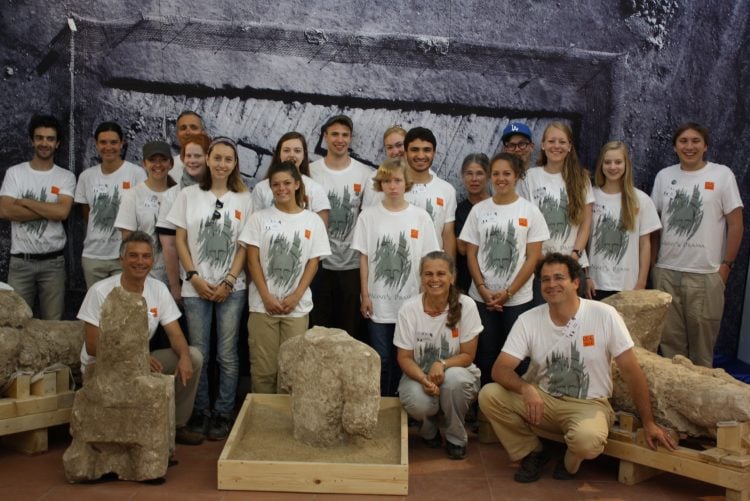International award-winning archaeologist to speak at Randolph

Archaeological Conservation Institute students from Randolph worked with Roberto Nardi and students from other institutions on the Mont’e Prama conservation project in 2015.
Roberto Nardi, the director of the Centro di Conservazione Archaeologica (CCA) in Cabras, Italy and co-director of Randolph’s Archaeological Conservation Institute, will discuss the CCA’s award-winning research at Randolph College Monday, October 10. His presentation, which is free and open to the public, will begin at 5:30 p.m. in Leggett 537.

Roberto Nardi
Nardi and the CCA have been internationally recognized for archaeological research on and conservation of the Nuragic Sculptures of Mont’e Prama in Sardinia, Italy. The project was awarded the Public Choice Award from Europa Nostra in 2015, and was selected by a jury of professionals in museums and heritage conservation for the Best in Heritage prize in 2016. For his presentation at Randolph, Nardi will talk about the historical, cultural, and economic impact of the conservation of the prehistoric sculptures on Sardinian heritage.
Nardi served as a Quillian Visiting International Scholar at Randolph in 2012.
Randolph students assisted with the project in 2015 and will again in 2017. Susan Stevens, professor of classics and the Catherine E. and William E. Thoresen Chair in Humanities, is co-director of Randolph’s Archaeological Conservation Institute, and said Nardi’s program will be of interest to anyone interested in archaeology, museum and heritage studies, and challenges facing cultural heritage.
“He has a broad view of conservation, rather restoration in the lab, and is a strong advocate for public involvement, especially local communities, in cultural heritage preservation,” Stevens said. “He offers our students and the public a window into the fascinating world of on-site archaeological conservation.”
Tags: Archaeological Conservation Institute, archaeology, classics, conservation, events, Quillian Visiting International Scholars, speakers, Susan Stevens

